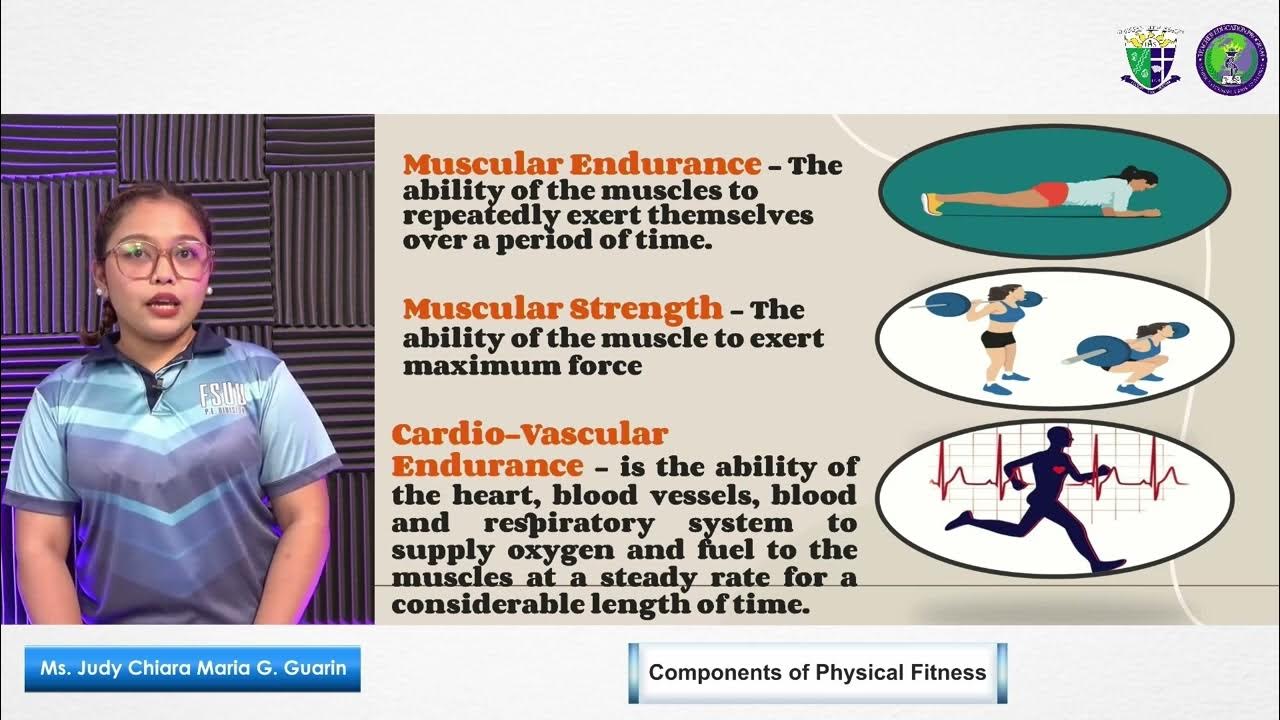Grade 8 PE & Health Q1 Ep 2 Go For Fitness Goal / Factors that affect one's attitudes...
Summary
TLDRThis video script is a detailed educational presentation on physical and health-related fitness, emphasizing skill-related fitness components like agility, balance, coordination, speed, power, and reaction time. It explains how these skills are vital in sports and daily activities, with practical examples and exercises to improve each area. The host also introduces the FITT principle, a method to create personalized workout plans. Additionally, the script briefly touches on factors that influence sexual behavior, including media, culture, peers, and family, providing a well-rounded view of personal fitness and health education.
Takeaways
- 🏋️♂️ Physical fitness is the ability to perform various tasks, and it is divided into health-related and skill-related components.
- ⚡ Skill-related fitness includes agility, balance, coordination, speed, power, and reaction time, which enhance athletic performance.
- ⛹️♂️ Agility allows athletes like basketball players to move quickly and change direction while maintaining balance.
- 🤸♀️ Balance is crucial in activities like gymnastics, yoga, and surfing, helping maintain an upright posture.
- 🎯 Coordination involves using senses like sight and hearing in conjunction with body movement, crucial for activities like soccer or golf.
- 🏃♂️ Speed is the ability to move fast, essential in sports such as basketball, tennis, and sprinting.
- 💪 Power combines strength and speed, seen in athletes like high jumpers and weightlifters who use explosive movements.
- ⏱️ Reaction time is the ability to respond quickly to stimuli, such as a swimmer starting at the sound of a whistle.
- 📝 The FIT principle (Frequency, Intensity, Time, Type) helps design workout plans that align with fitness goals and prevent overuse injuries.
- 🏅 Setting personal fitness goals, knowing your current fitness level, and adhering to a well-structured plan can improve both health and skill-related fitness.
Q & A
What is the primary difference between health-related fitness and skill-related fitness?
-Health-related fitness focuses on skills that enable one to stay physically healthy, while skill-related fitness enhances athletic or sports performance.
What are the six components of skill-related fitness?
-The six components of skill-related fitness are agility, balance, coordination, speed, power, and reaction time.
How does agility benefit basketball players?
-Agility allows basketball players to move quickly and efficiently change direction while maintaining balance, helping them perform jumps, slides, and twists during a game.
What is the stork balance test used for?
-The stork balance test is used to assess a person’s ability to maintain balance by standing on one leg for as long as possible.
Why is coordination important in sports like soccer or golf?
-Coordination helps individuals use their senses in combination with movement, allowing them to perform actions like catching a fly ball in soccer or hitting a golf ball accurately.
What is the significance of speed in athletic performance?
-Speed allows athletes to complete physical activities quickly, giving them an advantage in sports like basketball, tennis, and football.
How is power different from strength?
-Power combines strength and speed, allowing athletes to apply maximum force in a short period of time, such as in weightlifting or jumping.
How does reaction time impact a swimmer’s performance?
-A swimmer with a better reaction time can respond quickly to a starting signal, gaining an advantage by starting the race sooner than their competitors.
What is the FITT principle, and how does it help improve fitness?
-The FITT principle stands for Frequency, Intensity, Time, and Type of exercise, helping individuals structure their workouts to meet fitness goals and avoid overtraining.
How can the FITT principle be applied to avoid workout boredom and injuries?
-By incorporating different types, intensities, and durations of exercises, individuals can maintain a balanced program that prevents boredom, overuse injuries, and excessive weight loss.
Outlines

Cette section est réservée aux utilisateurs payants. Améliorez votre compte pour accéder à cette section.
Améliorer maintenantMindmap

Cette section est réservée aux utilisateurs payants. Améliorez votre compte pour accéder à cette section.
Améliorer maintenantKeywords

Cette section est réservée aux utilisateurs payants. Améliorez votre compte pour accéder à cette section.
Améliorer maintenantHighlights

Cette section est réservée aux utilisateurs payants. Améliorez votre compte pour accéder à cette section.
Améliorer maintenantTranscripts

Cette section est réservée aux utilisateurs payants. Améliorez votre compte pour accéder à cette section.
Améliorer maintenantVoir Plus de Vidéos Connexes

Brain Bites - Skill Related Fitness

P.E. (1st Quarter) Module 1 Lesson

Physical Fitness Components (HRF and SRF) | Physical Education 7 8 9 10 - 1st Quarter | Maam CJ

MAPEH 9 (PHYSICAL EDUCATION VIDEO LESSON 1 - QUARTER 1)

COMPONENTS OF PHYSICAL FITNESS (PATHFIT 2)

Pengertian Kebugaran Jasmani - Materi Pembelajaran PJOK
5.0 / 5 (0 votes)
